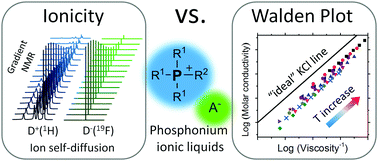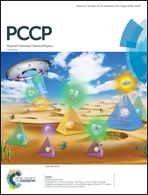Transport properties and ionicity of phosphonium ionic liquids†
Abstract
Ionic liquids (ILs) are promising electrolytes and many efforts have been made in basic scientific research as well as in applied research. In this contribution, we synthesised a variety of partly novel phosphonium ILs with different anions as well as with different compositions and lengths of the side chains of the cations. We measured a variety of their important transport properties such as viscosity, conductivity and diffusivity by means of stress-controlled rheology, impedance spectroscopy and PFGSTE NMR diffusometry. The results are analysed with respect to different models for derivation from ideal behaviours such as the ionicity and the (fractional) Walden rule depending on their molecular structure. These models are well established in the literature and are herein applied to rarely investigated but promising phosphonium ILs, with a particular emphasis placed on the effect of ether side chains. In comparison, the models show a qualitative correlation but distinct deviation in the quantification especially in the temperature dependent values and with other IL systems. These results aim to facilitate a better understanding of the IL properties depending on the molecular composition and by this way help to choose the ILs with optimal properties for practical applications.



 Please wait while we load your content...
Please wait while we load your content...